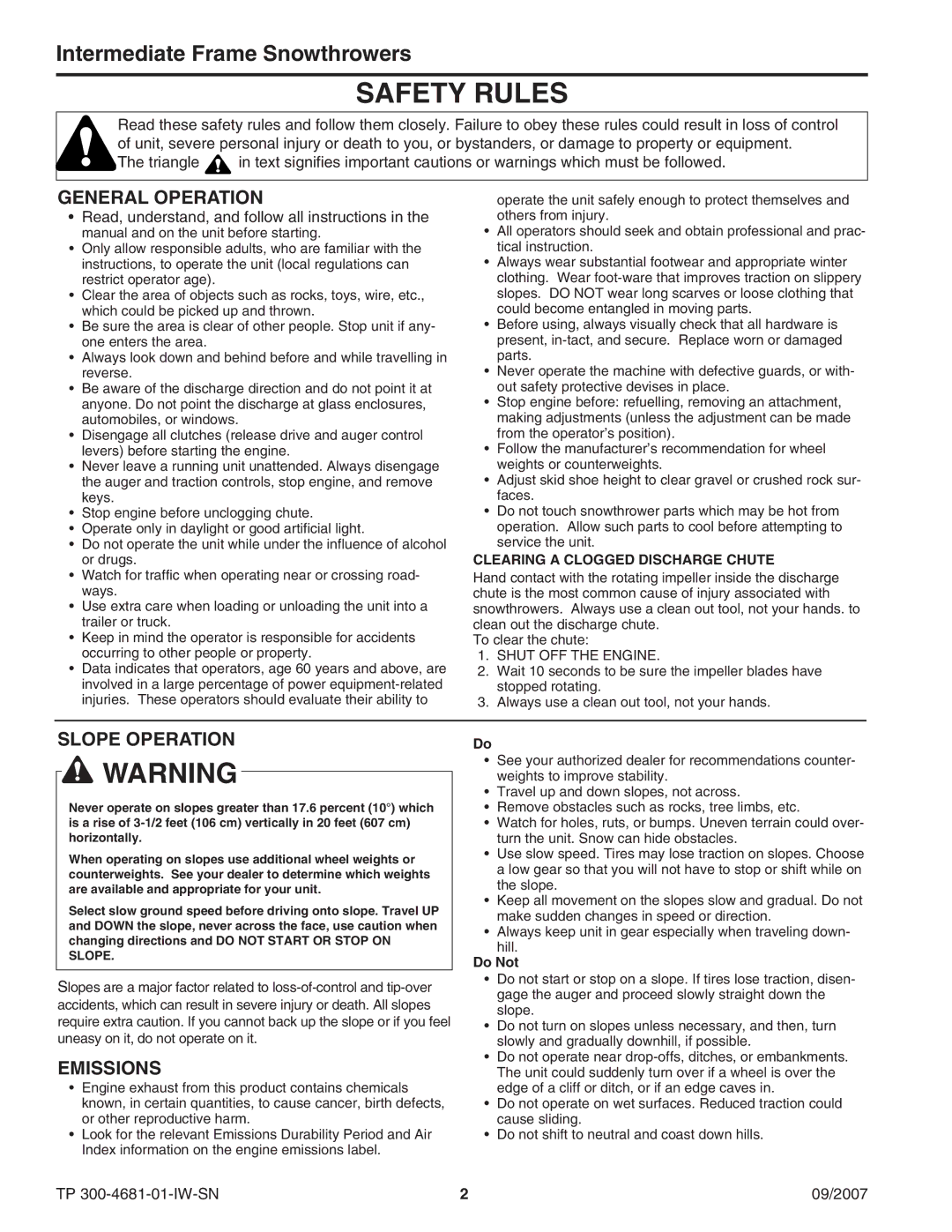9GT, 9GT B&S24(CE), B&S24, B&S 24 (CE), B&S24(CE) specifications
The Simplicity SMI I1924EX, 9GT, B&S24, SMI I1924E, and SNP I1924EX are cutting-edge lawn tractors designed to revolutionize the way users maintain their yards. Each model brings unique features that cater to a variety of landscaping needs, making them ideal for both residential and light commercial applications.One of the standout features of these models is their powerful Briggs & Stratton engines. The B&S24 engine, in particular, delivers robust performance with impressive torque and reliability. This engine capability ensures that even the toughest mowing tasks can be tackled with ease. The powerful engine is complemented by a smooth transmission system, providing seamless speed adjustments and enhancing overall maneuverability.
Another key characteristic is their innovative cutting technology. With a mower deck designed for precision, the Simplicity SMI I1924EX series provides a clean, even cut, significantly reducing the amount of time spent on lawn maintenance. The decks are engineered for superior grass dispersal, leading to healthier lawn growth while minimizing clumping. The adjustable cutting height feature allows users to achieve the perfect lawn aesthetic.
These models also boast user-friendly controls, making them accessible for users of all experience levels. Intuitive dashboards and ergonomic seating ensure comfort during prolonged use. Many of the models in this series come equipped with cruise control, allowing for a consistent mowing speed that reduces user fatigue.
Durability is a cornerstone of Simplicity’s design philosophy. The robust construction of the chassis and the high-quality materials used in the build ensure that these tractors can endure the rigors of regular use over time. This reliability is further enhanced by features like a reinforced mower deck that withstands rough terrain and obstacles.
Additionally, the Simplicity SMI I1924 series incorporates advanced technologies such as easy-start systems and low emissions engines, which make them environmentally friendly choices for lawn care enthusiasts. The easy maintenance features, including accessible oil drains and air filters, simplify upkeep, allowing users to spend more time mowing and less time on maintenance.
In summary, the Simplicity SMI I1924EX, 9GT, B&S24, SMI I1924E, and SNP I1924EX lawn tractors combine power, precision, comfort, and durability. They are the perfect solution for anyone seeking efficient lawn care equipment that meets the demands of modern landscaping. Whether for home use or professional landscaping services, these models are built to deliver exceptional results.

